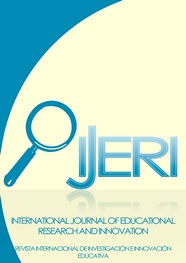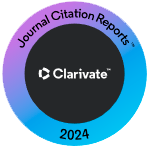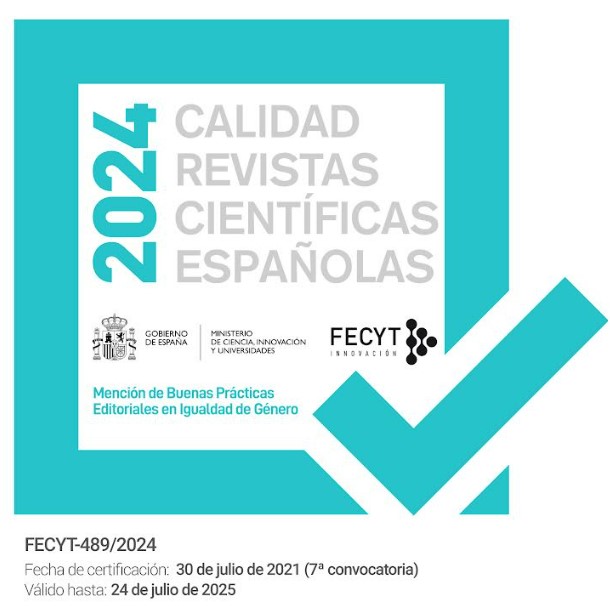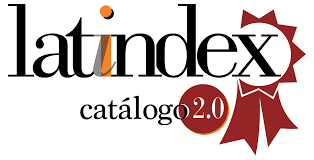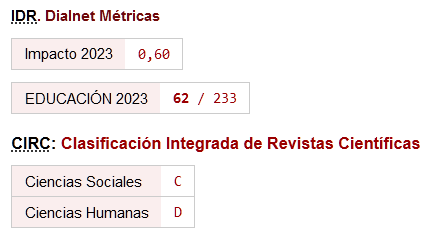Language certification in the Spanish Universities: A quantitative study at the University of Córdoba
DOI:
https://doi.org/10.46661/ijeri.3750Keywords:
Language learning, language certification, B1, Higher EducationAbstract
With the widespread arrival of language competence requirements at the Spanish university degrees, language certification has gained an essential relevance. In this study, we will present firstly a state of the matter, to later focus on our analysis on the certification process of the University of Cordoba’s students. Our statistical study, based on a sample of more than two thousand students, will provide enough data to sketch a close outlook on how students comply with this requirement, taking into account variables such as entry mark, macroarea, sex and language chosen. Moreover, we will be able to determine whether this measure is helping us build a plurilingual Europe.
Downloads
References
ACLES (2014). CertaAcles. Modelo de Acreditación de los exámenes de ACLES. Recuperado en http://www.acles.es/multimedia/enlaces/9/files/fichero_136.pdf.
Alderson, J. (2007). The CEFR and the need for more research. The Modern Language Journal, 91(4), 659–663.
Alderson, J., Figueras, N., Kuijper, H., Nold, G., Takala, S., & Tardieu, C. (2006). Analysing tests of reading and listening in relation to the common European framework of reference: The experience of the Dutch CEFR construct project. Language Assessment Quarterly: An International Journal, 3(1), 3–30.
Barrault-Méthy, A. M. (2013). The Common European Framework of Reference: The globalisation of language education policy. English Language Teaching Journal 67(4), 500-502.
Bazo Martínez, P. & González Álvarez, D. (2017). Política Lingüística para la Internacionalización del Sistema Universitario Español. Madrid: CRUE.
Broek, S. & Van den Ende, I. (2013). La aplicación del Marco Común Europeo de Referencia para las Lenguas en los sistemas educativos europeos. Bruselas: Parlamento Europeo.
Clouet, R. (2010). El enfoque del Marco Común Europeo de Referencia para las Lenguas: Unas reflexiones sobre su puesta en práctica en las facultades de traducción e interpretación en España. Revista de Lingüística Teórica y Aplicada, 48(2), 71-92.
Corpas, Mª D. & Daniel Madrid, D. (2009). Desarrollo de la comprensión oral en inglés como LE al término de la Educación Secundaria Obligatoria española. Porta Linguarum, 11, 129–145.
Cortina, B. (2011). La expresión oral en lengua inglesa de los futuros maestros: un reto para el Espacio Europeo de Educación Superior. Porta Linguarum, 16, 155–177.
Council of Europe (1975). The Threshold Level. Strasbourg: Council of Europe.
Council of Europe (1992). Transparency and coherence in language learning in Europe: Objectives, evaluation, certification. Report on the Rüschlikon Symposium. Strasbourg: Council of Europe.
Deygers, B., Zeidler, B., Vilcuc, D. & Hamnes Carlsend, C. (2017). One Framework to Unite Them All? Use of the CEFR in European University Entrance Policies. Language Assessment Quarterly, 9, 1-13.
European Commission (2012). Special Eurobarometer 386 – Wave EB77.1, Europeans and Languages. Brussels: European Comission.
Figueras, N. (2012). The impact of the CEFR. ELT Journal, 66(4), 477–485.
Fuentes González, A. D. (2013). De momento, lenguas alla bolognese. Porta Linguarum, 19, 239-256.
Fulcher, G. (2012). Scoring performance tests, en Fulcher, G. & Davidson, F. (Eds.). The Routledge handbook of language testing (pp.378–392). London: Routledge.
Hulstijn, J. (2007). The shaky ground beneath the CEFR: Quantitative and qualitative dimensions of language proficiency. The Modern Language Journal, 91(4), 663–667.
Krumm, H. J. (2007). Profiles instead of levels: The CEFR and its (ab)uses in the context of migration. Modern Language Journal, 91(4) 667-669.
Lasagabaster, D. (2008). Foreign language competence in content and language integrated courses. The Open Applied Linguistics Journal, 1, 30–41.
Little, D. (2007). The common European framework of reference for languages: Perspectives on the making of supranational language education policy. The Modern Language Journal, 91(4), 645–655.
Little, D. (2011). The Common European Framework of Reference for Languages, the European Language Portfolio, and language learning in higher education. CercleS 2011, 1(1), 1 – 21.
Mateo, J. (2012). “La investigación ex post-facto”, en R. Bisquerra (coord.), Metodología de la Investigación Educativa (pp.195-229). Madrid: La Muralla.
North, B. (2007). The CEFR illustrative descriptor scales. The Modern Language Journal, 91(4), 656–659.
North, B. (2014). Putting the common European framework of reference to good use. Language Teaching, 47(2), 228–249.
Autores (2013). Análisis y percepción por parte del alumnado del requisito lingüístico en el acceso al Máster de Formación del Profesorado de Educación Secundaria. Porta Linguarum, 20, 63-76.
Downloads
Published
How to Cite
Issue
Section
License
Copyright (c) 2019 IJERI: International Journal of Educational Research and Innovation

This work is licensed under a Creative Commons Attribution-NonCommercial-NoDerivatives 4.0 International License.

